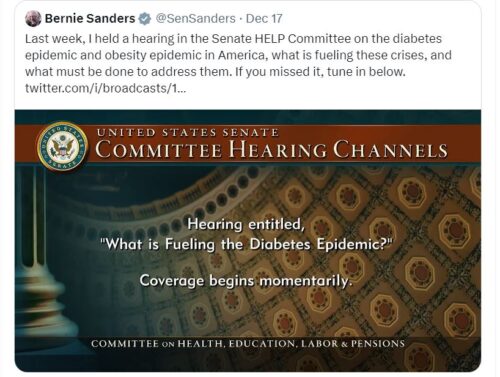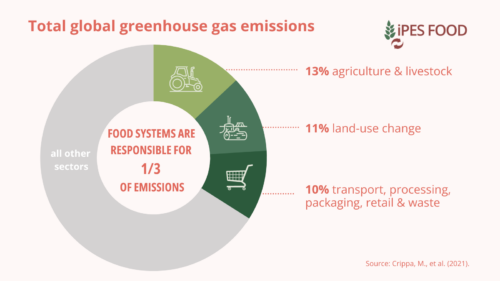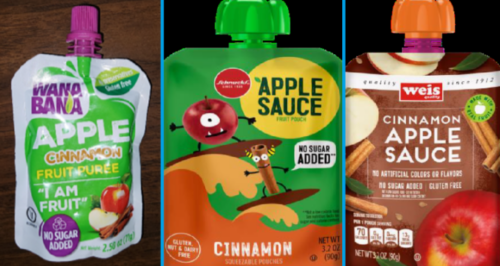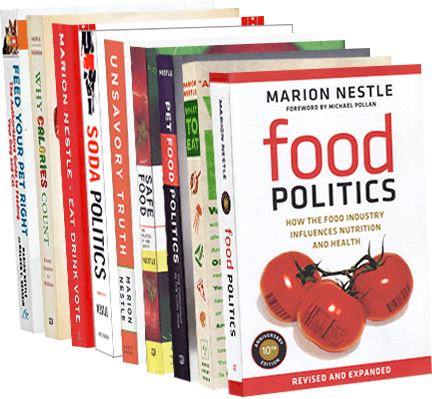Senator Bernie Sanders vs. Big Food
Just before the Christmas holidays, Senator Bernie Sanders (Ind-VT), who chairs the Senate Health, Education, Labor & Pensions Committee , held a hearing: What is Fueling the Diabetes Epidemic?

Some of the quotes from the Senator’s remarks are amazing. They need to be said, loud and clear:
- Why is the number of children in America today who have Type 2 diabetes estimated to skyrocket by nearly 700% over the next four decades?
- For decades, in my view, we have allowed large corporations in the food and beverage industry to entice children to eat foods and beverages loaded up with sugar, salt, and saturated fat, purposely designed to be over-eaten,
- The situation has gotten so bad that most of what children in America eat today consists of unhealthy, ultra-processed foods that doctors have told us lead to a higher risk of type 2 diabetes.
- While diabetes and obesity rates in America soar, the food and beverage industry spends billions on advertising to get consumers, including young children, hooked on their unhealthy products.
- This has got to stop. A good place to start? Banning junk food ads targeted at kids.
- This is not a radical idea.
- We must have the courage to take on the greed of the food and beverage industry which, every day, is undermining the health and well-being of our children by pushing extremely unhealthy products which far too often cause obesity and type-2 diabetes.
The hearing began with:
- Chairman Bernie Sanders, I-Vt., prepared remarks
- Ranking member Sen. Bill Cassidy, R-La., prepared remarks
Witness testimony
- Ashley Gearhardt — Professor of psychology, University of Michigan, Ann Arbor, Mich.
- Lindsey Smith Taillie — Associate professor, Department of Nutrition, University of North Carolina, Chapel Hill, N.C.
- Kasia Lipska — Associate professor of medicine, Yale School of Medicine, New Haven, Conn.
- Natalie Stanback — Volunteer and parent of a child with type 1 diabetes, JDRF, Lewisville, Texas
- Aaron Kowalski — CEO, JDRF, New York
Senator Sanders also wrote an op-ed in USA Today: “We can’t allow the food and beverage industry to destroy our kids’ health.
Helena Bottemiller Evich, writing in Food Fix “Bernie Sanders vs. Big Food,” asks why Sanders is doing this now? She has no answer, but I think its fabulous that he is taking this on and joining Senator Cory Booker in this endeavor.
Diet-related chronic diseases are a big problem for kids as well as adults.
It’s way past time to take on the food industry’s manipulative marketing practices.
Cheers to Senators Sanders and Booker. We need more of you in Congress.







